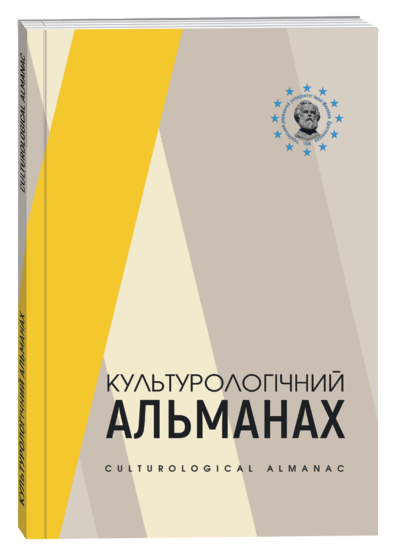ARTISTIC SYNTHESIS IN CHORAL PERFORMANCE AS AN ECOSYSTEM
DOI:
https://doi.org/10.31392/cult.alm.2022.4.21Keywords:
choral culture, ecosystem approach, notation, monody, polyphonyAbstract
The relevance of the problem of reconstruction of valley-line notation systems is related to the meta-ecological approach to the preservation of national traditions of choral music. The purpose of the article is to determine the priorities of applying the ecosystem approach for building one's own model of choral performance as a polysystemic, metacultural and metaartistic integrity, combining the intention of both monophonic and polyphonic vocal systems. The research methodology is presented with comparative and systematic approaches, which makes it possible to make a correct comparative analysis for the cultural-historical reconstruction of the integrity of choral singing in the context of sacred performance traditions. Phenomenological and dialectical methods help to determine figurative transformations of the sonorous matter of singing in the system of down-line, linear and post-linear (non-linear) notation. Scientific novelty of the article. Synthetic trends in choral performance were already defined in the ancient Russian singing tradition. Slavic achievements of partes singing do not arise as a pure borrowing of the Western tradition, which we are already used to. Ancient Russian choral music is an evolutionary branch that transforms the intentions of the Byzantine Greek model, which came to Ancient Rus from different directions, in particular from Bulgaria, as a certain symbiosis, a kind of union of the extensive metric of the monody and the intensive metric, which we associate with the syntax that is formed with a five-line musical notation. Conclusions. The sharp impulse of the transformation of monody and the transfer of singing to a system of linear notation, which was noted as the emergence of the Cartesian space in the musical notation toolkit, took place in the Slavic area due to the fact that the symbiotic dimension of the Slavic script is emerging, which is formed as an adapted alphabet of the Greek Byzantine alphabet and at the same time the union of different intentions originating from the East and the West. This leads to the fact that ancient singing books with musical notation, where polyphony is already clearly visible – this is the beginning of the 17’th century – have a kind of compromise character.
References
Герасимова-Персидська Н. (1978). Хоровий концерт на Україні в ХVII–ХVIIІ ст. Київ : Музична Україна. 181 с.
Грица С. (2012). Леся Дичко в житті і творчості. Дрогобич : Посвіт. 272 с.
Зинькевич Е. (2007). Mundus musicalaе. Тексты и контексты. Киев : ООО «Задруга». 616 с.
Зосім О. (2003). Латинська літургічна традиція та українська духовна пісня. Старовинна музика: погляд у майбутнє. Київ : НМАУ ім. П. І. Чайковського. С. 57–68.
Кияновська Л. (2007). Галицька музична культура ХІХ–ХХ століття. Чернівці : Книги. 424 с.
Козаренко О. (2001). Сакральна творчість українських композиторів ХХ століття в контексті національних музично-семіотичних процесів. Українське музикознавство : науково-методичний збірник / упорядк. І. Котляревського. Вип. 30. Київ : НМА ім. П.І. Чайковського. С. 138–150.
Корній Л. (1998). Історія української музики : підручник. Київ – Харків – Нью-Йорк : вид. М.П. Коць. Ч. 2 : Друга половина XVIII ст. 387 с.
Легенький І. (2015). Сакральний етос творів у музичному постнонконформізмі України. Аркадія : мистецтвознавчий і культурологічний журнал. Одеса : Одеський національний політехнічний університет. № 1(42). С. 124–127.
Маркова О. (2002). Проблеми музичної культурології у світлі концепції соціології музики І. Ф. Ляшенка. Культурологічні проблеми української музики : наукові дискурси пам’яті академіка І. Ф. Ляшенка. Київ : НМАУ ім. П. І. Чайковського. С. 79–91.
Gardner J. (1967). Dаs Problem des altrussischen demenstrischen Kirchengesanges und seiner linienlosen Notation. Munich.








